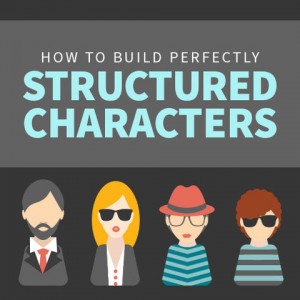A writer recently asked, do the Dramatica software and theory support multiple protagonists (several people trying to achieve the goal for themselves)?
First, the short answer is yes, Dramatica supports that.
But there’s more.
Here’s the long answer (bear with me here as the following should really open up some new ways of looking at story structure for you).
Why does structure exist in fiction and where did it come from? In real life, when people are drawn toward a point of common interest - be it by forming a club or organization or just by competing for the same thing, they quickly adopt roles - they self-organize unconsciously. What are these roles and where do they come from? We each have mental tools with which to assess the current situation, determine a potential improved situation, and to devise a plan to change what is to what we’d like better. That’s narrative’s core. It is what the individual does. We each have, for example, our ability to reason and a sense of skepticism. But in a group, like a company or a political organization, we specialize, each adopting just one of those tools as our job. And so, someone emerges as the voice of reason, another as the resident skeptic. This helps the group see deeper into the area of common concern than if everyone was each trying to do all the jobs like general practitioners.
Fiction is our attempt to understand these roles and how they interact with one another. It is our attempt to understand the best approach to take, of all those that might be considered, in order to achieve our desired goals. It is advice on how to best fulfill our obligation to ourselves in our personal narratives when they come into conflict with our group narratives. For 30,000 years we have told stories to provide guidance in life, and, through trial and error, the elements of those stories, such as the archetypal roles representing the roles we take in groups, became encoded as the conventions of story structure.
Because each of the roles in a group represents an aspect or facet of our individual minds, these conventions of story structure provide a map of how our individual minds work, as well as our “group minds.” When we developed Dramatica, we were the first to recognize that the structure of story modeled the human mind and the group mind. Armed with that understanding, we mapped out these conventions of structure from a psychological point of view and learned such things as the following:
Some stories have a single goal with a protagonist and an antagonist. Other stories have single goals but have many people trying to achieve and/or prevent achievement of the goal. But only one of these people is a protagonist and one is an antagonist. Each of the others, though seeking the goal, operates as one of the other roles, such as reason or skepticism.
So, it would be redundant to have “multiple protagonists” as they would all be trying to prove whether that same human quality is the best way to solve the problem. Protagonist represents our initiative - the motivation to instigate change. A better structured story would have one person who starts the quest, and others who join in to get there first. Then, each of the others could illustrate whether those other traits are the best ones to use and that would be the story’s message.
A good example that comes to mind are the characters in the old comedy “The Great Race” with Tony Curtis and Jack Lemon. Though Tony is the protagonist because he comes up with the idea of the Great Race and Jack is the antagonist because he is the long-time chief competitor to Tony, many people join the race, each seeking to win, and they represent the other archetypal roles in how they try to do it.
In summary, I would say that you would do better not to think of all those attempting to achieve the goal as protagonists, but as representing other human traits than “initiative,” which is what defines the actual protagonist. And from that point of view, Dramatica only allows one protagonist, but can have as many characters as you like trying to achieve the goal.
Learn more about narrative structure and Dramatica at http://storymind.com/dramatica/





